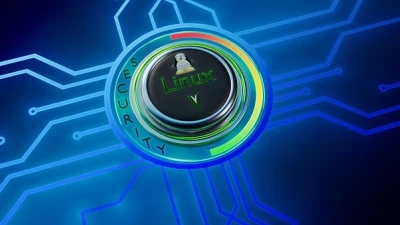
Like any OS, Linux, renowned for its robust security features, also has vulnerabilities. Although it is still a popular choice for servers and other critical systems, its security landscape has changed dramatically over time.
Threats have become more complex, from the first Linux virus, Staog, to more recent vulnerabilities like the ksmbd and file server module vulnerability. To help you understand the evolution of Linux security and how to secure your systems against modern and emerging threats, I'll examine changes in Linux security over the years, comparing Staog's dangers to modern exploits. I'll then offer practical measures you can use to mitigate risk in 2024. Let's begin by understanding Staog, the first Linux virus.
Understanding Staog: The First Linux Virus
Staog, the first Linux Virus, was discovered in 1996. The Linux ecosystem wasn't as widespread then, but Staog exposed significant security flaws within the kernel. This virus exploited vulnerabilities that allowed attackers to gain root access and run arbitrary code. Staog infected executable files, making it hard to detect without antivirus tools. Though primitive by today's standards, Staog warned the Linux community about the importance of patching and kernel security.
What Made Staog So Dangerous?
Staog’s success was due to a lack of privilege separation and limited awareness of security threats at the kernel level. Linux systems at the time lacked the sophisticated security layers that we see today in modern operating systems. Staog exploited vulnerabilities that enabled it to elevate privileges and execute malicious code as root.
Examining Modern Linux Security: A Review of Today's Vulnerabilities & Threats
 Modern Linux vulnerabilities, in contrast to Staog's threat, are much more complex. They often involve sophisticated attack vectors. Over the years, several critical vulnerabilities have been discovered. For instance, CVE-2022-47939 is a buffer overflow vulnerability found in the ksmbd module of the file server. Another notable threat, CVE-2022-847, is known as "Dirty Pipe." These vulnerabilities allow privilege escalation and remote code execution. They are similar to Staog but much more widespread.
Modern Linux vulnerabilities, in contrast to Staog's threat, are much more complex. They often involve sophisticated attack vectors. Over the years, several critical vulnerabilities have been discovered. For instance, CVE-2022-47939 is a buffer overflow vulnerability found in the ksmbd module of the file server. Another notable threat, CVE-2022-847, is known as "Dirty Pipe." These vulnerabilities allow privilege escalation and remote code execution. They are similar to Staog but much more widespread.
Modern threats are more challenging to detect than Staog because they focus on networks. For example, CVE-2022-25636 was a vulnerability discovered in the Linux kernel component netfilter, allowing attackers to bypass security restrictions.
The Growing Complexity of Linux Security Threats In the Modern Era
Linux vulnerabilities today are complex and require a high level of technical expertise to exploit. The increased adoption of cloud computing and containerization further complicates securing systems against these threats. CVE-2024-26592, CVE-2024-26594, and other newly discovered vulnerabilities in specific kernel modules are examples of a growing trend for kernel-based attacks.
Patch management is another crucial issue in the modern age. Today's developers must release timely patches and admins must continue monitoring threats with utmost devotion.
What Is the Role of Open Source In Linux Security?
Linux's open-source nature allows the community to make security improvements. Open collaboration is essential for rapidly detecting and fixing vulnerabilities like the ksmbd File Server module vulnerability. Open-source platforms and tools, like SELinux and AppArmor, provide robust access control mechanisms that weren't available during the Staog era.
However, open source is not without its downsides. The code is freely available, and attackers can use it to find potential vulnerabilities.
Best Practices for Safeguarding Linux Systems Against Modern Threats
 Linux security methods have also significantly improved. Locking out kernel access is one of the best ways to secure a Linux system. Linux Kernel Lockdown is one of the most powerful kernel security additions. It prevents unauthorized kernel memory access and the loading of unsigned modules.
Linux security methods have also significantly improved. Locking out kernel access is one of the best ways to secure a Linux system. Linux Kernel Lockdown is one of the most powerful kernel security additions. It prevents unauthorized kernel memory access and the loading of unsigned modules.
Best practices for securing Linux systems in 2024 include:
- Scan Periodically for Open Ports: Ports are one of the fundamental features of Linux security. Unintentionally open ports can be a mistake that creates weaknesses in a network and allows malicious users to gain access.
- Regular Security Audits: Today, Linux administrators can audit all system activities thanks to powerful auditing tools. Linux Auditing System is the strongest of these tools. Regular security audits provide a comprehensive view of your system, including performance and vulnerabilities. They also help identify suspicious activity that could disrupt the integrity of your network.
- Ensure You Patch Your OS and Software Regularly: Patch management is critical to mitigating known vulnerabilities that attackers could exploit. Apply security patches as soon as your distro(s) release them.
Our Final Thoughts on the Evolution of Linux Security
Linux's resilience and adaptability are demonstrated by its journey from Staog through recent flaws like the ksmbd vulnerability in the file server module. Vulnerabilities have advanced, but defenses have evolved as well. Linux administrators can safeguard their networks by leveraging the latest security features, such as Linux Kernel Lockdown, and conducting regular audits.



















